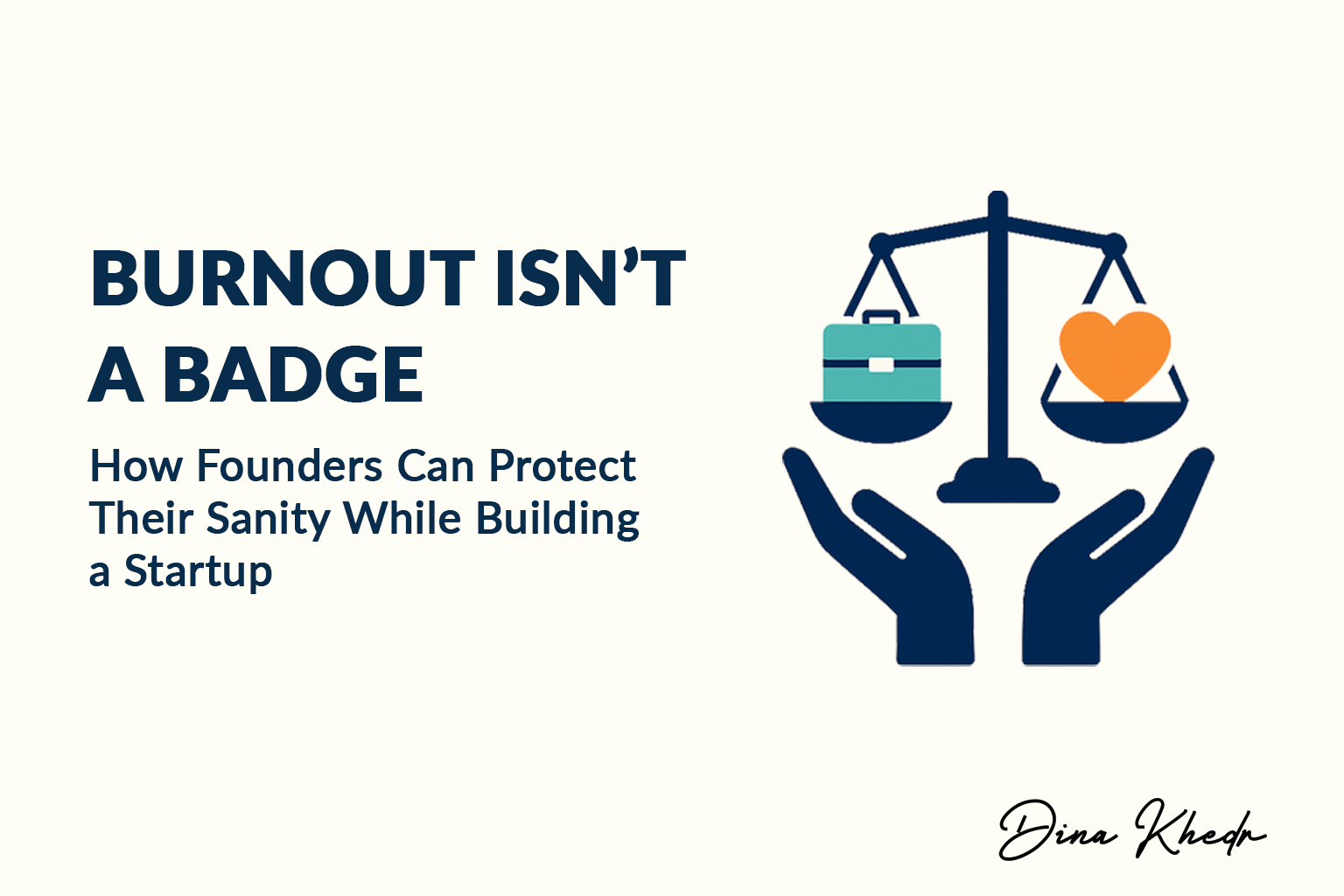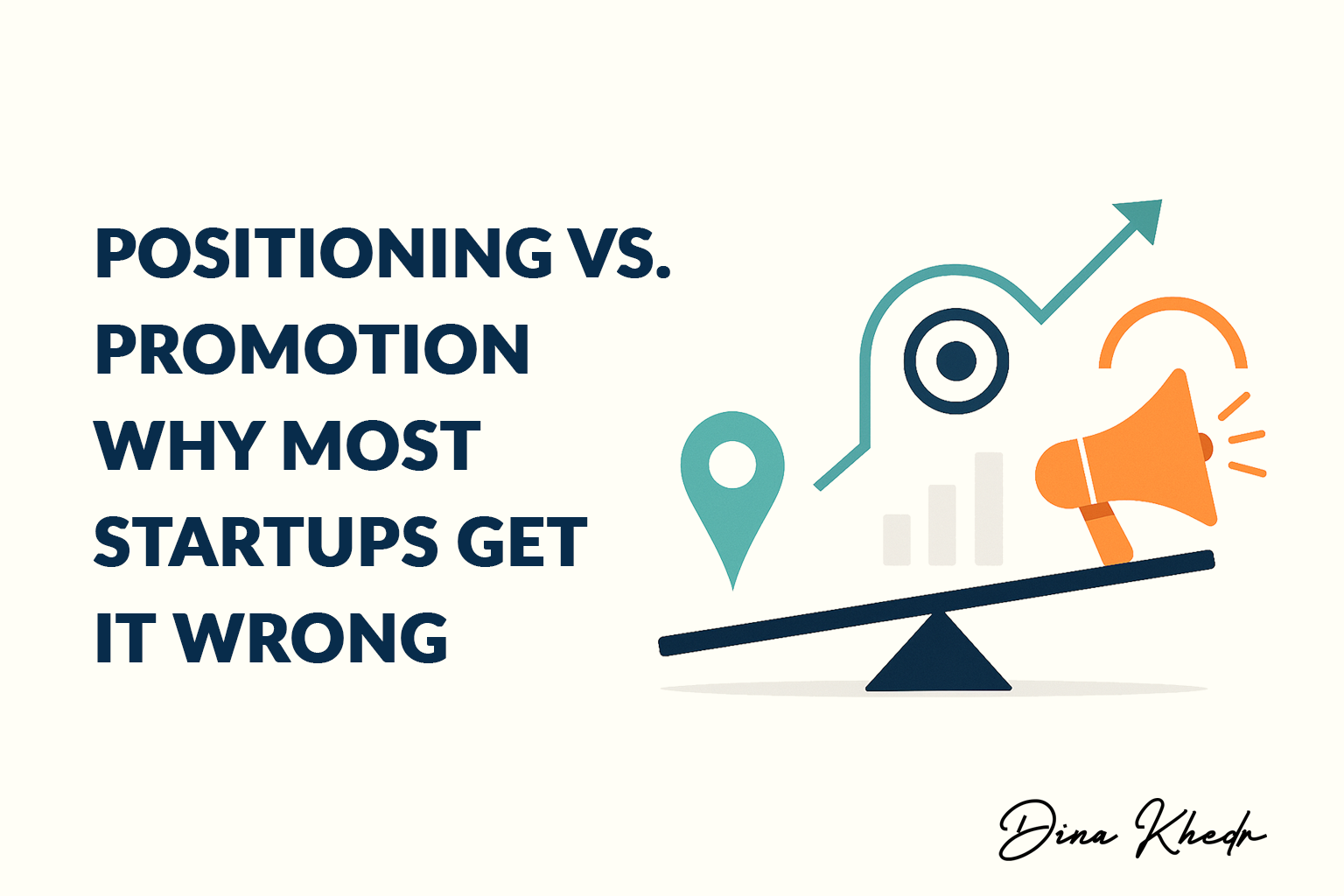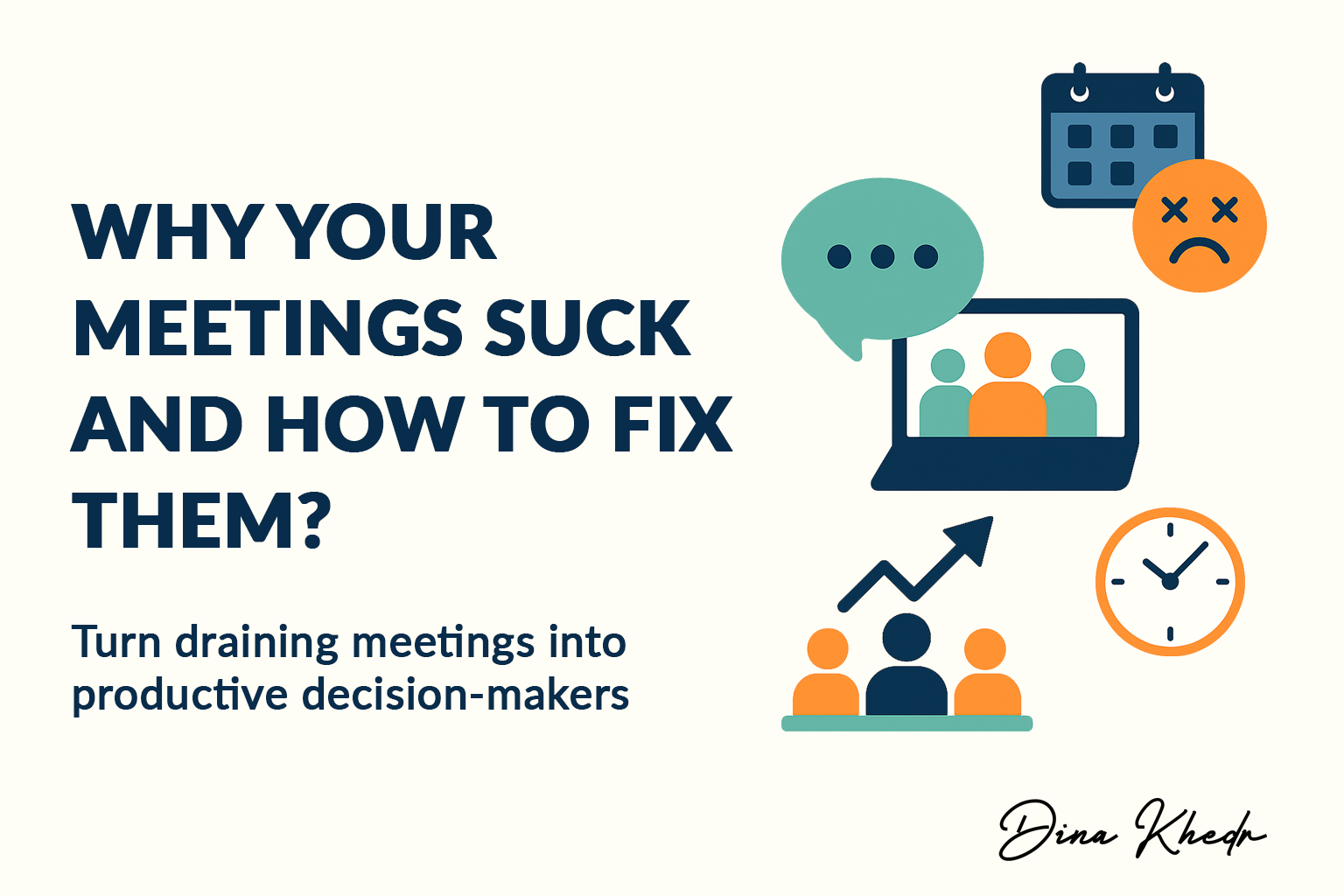Choosing the Right Pricing Model for Your Business
Pricing isn’t just about numbers—it’s about perception, positioning, and growth. Whether you're in early-stage development or pivoting for growth, pricing should align with your business model, marketing goals, and the value you offer.
For early-stage startups, pricing feels like a guessing game. Too low, and you leave money on the table. Too high, and you risk killing conversion. So founders often take the path of least resistance:
“Let’s just look at what competitors charge and go from there.”
But here’s the truth: how you price shapes how people perceive your value—and your whole business model. It’s not just about revenue. It’s about positioning, retention, and product-market fit.
Let’s break down how to choose the best pricing strategy for your business.
💡 Why Pricing Strategy Can Make or Break a Startup
In the startup world, your pricing is often the first real impression you make. It influences everything from customer acquisition to investor interest. Set your prices too low, and you risk undervaluing your solution. Too high, and you could scare off your early adopters.
A clear, thought-out pricing model:
- Signals confidence and credibility
- Impacts cash flow and runway
- Helps with product-market fit through validated willingness to pay
💵 Common Pricing Models for Early-Stage Startups
Start with the basics—but don’t stop there. The pricing model you choose should reflect how your business delivers value, what your customers expect, and how you plan to grow. Here’s a breakdown of the core models every founder should understand.
🔢 1. Cost-Based Pricing
“We’ll charge based on what it costs us to deliver.”
✅ Best for:
- Service businesses with clear labor or delivery costs
- Physical products where unit economics matter
- Setting a basic profitability floor
⚠️ Watch out for:
- Doesn’t reflect what customers are willing to pay
- Can leave margin on the table, especially in B2C
- Not ideal for digital or SaaS models with near-zero marginal cost
Use cost-based pricing to avoid undercharging—but don’t let it define your ceiling.
👥 2. Competitor-Based Pricing
“Let’s benchmark against similar offerings in the market.”
✅ Best for:
- Established categories with visible pricing
- Entering price-sensitive B2B or B2C markets
- Positioning as a budget-friendly or accessible alternative
⚠️ Watch out for:
- Can lead to commoditization
- Doesn’t account for your unique value
- Assumes competitors have their strategy right (they often don’t)
Competitor pricing can inform—but should never drive—your decisions.
💡 3. Value-Based Pricing
“Let’s charge based on the outcome we deliver to customers.”
✅ Best for:
- Startups solving clear, high-priority problems
- B2B services or SaaS products with ROI outcomes
- Niche markets with underserved needs
⚠️ Watch out for:
- Requires deep customer understanding
- Harder to test without real usage or feedback
- Can be miscalibrated if you assume too much
Value-based pricing is the most strategic—but it demands insight, not just intuition.
🎁 4. Freemium Pricing
“Offer a free version with limited features, then upsell.”
✅ Best for:
- Digital products with low marginal cost
- SaaS or tools with strong network effects
- Models with long-term monetization (e.g., LTV via upgrades)
⚠️ Watch out for:
- High support cost for free users
- Low conversion if upgrade path isn’t clear
- Potential devaluation of your core product
Freemium can drive scale fast—but only if you convert at the right moment.
📊 5. Tiered Pricing
“Different plans for different segments.”
✅ Best for:
- Diverse customer base (e.g., freelancers to enterprises)
- B2B services or SaaS with modular value
- Teams ready to scale pricing with usage or growth
⚠️ Watch out for:
- Complexity in messaging and packaging
- Overlapping features that confuse buyers
- Poor differentiation between tiers
Tiered pricing works best when each plan reflects real user needs—not just feature gates.
⚡ 6. Dynamic Pricing
“Adjust prices based on demand or user behavior.”
✅ Best for:
- E-commerce, marketplaces, or on-demand services
- Environments with variable capacity or urgency
- Teams with data capabilities and real-time insights
⚠️ Watch out for:
- Customer confusion or pricing backlash
- Difficult to implement without analytics infrastructure
- Potential trust issues without transparency
Dynamic pricing can maximize revenue—but only when it adds value and fairness.
📈 Beyond the Basics: Advanced Pricing Models for Growing Startups
As your traction grows and your audience segments sharpen, you may need more scalable or dynamic pricing approaches.
🔄 Subscription Pricing
“Ongoing value deserves ongoing revenue.”
✅ Great for: SaaS, service retainers, communities, B2C platforms
⚠️ Risk: Churn. You must continuously deliver visible value.
💡 Tip: Anchor pricing to usage, access, or outcomes—not just features.
⏩ Forward-Looking Pricing
“Our price reflects the value we’re building toward.”
✅ Great for: Beta-stage products, pre-launch offers, roadmap-aligned services
⚠️ Risk: Misaligned expectations
💡 Tip: Use early pricing incentives (e.g., lifetime deals, locked-in rates) to reward belief and gain feedback.
⚡ Peak Load Pricing
“We adjust pricing based on demand or timing.”
✅ Great for: On-demand services, bookings, marketplaces, event-based models
⚠️ Risk: Poor transparency can erode trust
💡 Tip: Only use where it adds clarity and efficiency—don’t surprise users.
📊 Startup Pricing Models Summary Table
| Model | Best For | Key Benefit | Watch Out For |
|---|---|---|---|
| Cost-Based Pricing | Services, physical products, early MVPs | Establishes a baseline for profitability | Ignores customer willingness to pay; not ideal for SaaS or digital products |
| Competitor-Based Pricing | Established categories, price-sensitive markets | Easy benchmark, fast to implement | Leads to commoditization; assumes competitors got it right |
| Value-Based Pricing | B2B, high-stakes problems, niche markets | Aligns price with perceived customer value | Harder to validate early; requires deep customer understanding |
| Freemium Pricing | SaaS, low-cost digital products, network effects | Drives user base growth quickly | Low conversion risk; may devalue the core product |
| Tiered Pricing | Diverse customer base, scalable services or SaaS | Enables customer segmentation and upselling | Complex packaging; risks feature overlap or confusion |
| Dynamic Pricing | E-commerce, marketplaces, on-demand models | Maximizes revenue in real-time environments | Can erode trust; requires strong analytics capability |
| Subscription Pricing | SaaS, retainers, membership models | Predictable revenue stream | Churn risk if ongoing value isn’t delivered |
| Forward-Looking Pricing | Beta products, pre-launch, roadmap-based offers | Attracts early adopters and validates future value | Risk of overpromising; requires clear communication |
| Peak Load Pricing | Event-based, seasonal, capacity-constrained services | Matches pricing to demand and availability | Can confuse users if not transparent or justified |
🎯 Factors to Consider When Choosing Your Pricing Model
There’s no one-size-fits-all approach to pricing. The right model depends on what you're building, who you're selling to, and how your business is designed to grow. But there are a few core factors every early-stage startup should weigh before locking in numbers:
🔍 Market Landscape
What are others charging—and how do you stack up?
Knowing competitor pricing isn’t about copying—it’s about understanding customer expectations and where you can (or can’t) differentiate.
👤 Customer Segments & Budgets
Who are you targeting, and what can they afford?
A founder-led startup selling to mid-market CFOs has a very different ceiling than a B2C tool aimed at freelancers. Price should reflect buying power and decision urgency.
💎 Perceived Value
What problem are you solving, and how painful is it?
The more critical the outcome, the more room you have to price based on value. Anchor pricing to benefits, not features—especially in services and B2B.
🕒 Sales Cycle Length
Are you selling fast or building relationships over time?
If your product requires long decision-making cycles or complex onboarding, you may need fewer customers at a higher price to make the math work.
📣 Go-to-Market Strategy
How does pricing support your positioning and promotions?
Your pricing shouldn’t just sit quietly on a page. It should signal value, focus your messaging, and fit cleanly into your acquisition model—whether you're going outbound, self-serve, or partner-led.
Smart pricing isn’t just about what your product is worth—it’s about who you’re selling to, how you sell it, and how fast you want to grow.
🛠️ How to Pressure-Test Any Pricing Model
Use this four-step process to validate what works—no matter your model.
-
Talk to 3–5 customers or leads monthly
Ask: “What made this worth it?” or “What would have made you hesitate?” -
Test pricing tiers or packages
Compare conversion rates and feedback between 2–3 formats. -
Track key signals
-
B2B: Deal velocity, objection frequency, lifetime value
-
B2C: Conversion rate, refund requests, time-to-first-use
-
-
Update messaging before changing price
Sometimes what’s broken isn’t the number—it’s the story around it.
🧲 Promotional Strategies to Support Pricing Experiments
Your pricing model sets the structure. Your promotions help you test and learn.
💬 Founder's Offer / Beta Access
Invite early adopters into discounted or enhanced tiers in exchange for honest feedback.
🎁 Bundled Pricing
Package services or features into starter and premium plans. Helps identify what customers truly value.
⏱️ Time-Limited Launch Pricing
Create urgency: “Founding user pricing ends June 30.” Great for driving early sign-ups or pilots.
🤝 Strategic Discounts (Not Sales)
Offer meaningful reductions for testimonials, referrals, or pilots—not for random sales.
Promotional pricing is not about slashing value—it's about accelerating learning.
🧭 From Strategy to Street
Pricing isn't a one-time decision—it's a continuous process of alignment. It sits at the intersection of your customer’s perceived value, your market position, and your growth strategy.
The startups that win don’t just price for today—they test, learn, and evolve with their customers.
📣 Need Help Designing a Smart, Testable Pricing Model?
I work with early-stage founders across B2B and B2C to craft pricing strategies that align with value, validate quickly, and support sustainable growth—whether you’re selling software, services, or something in between.
👉 Book a free 60-minute discovery call to discuss your challenges and explore next steps:
📅 Schedule Free Discovery Call
📬 Or reach out directly: info@dinakhedr.com
Let’s get your strategy working on the street—where it counts.


